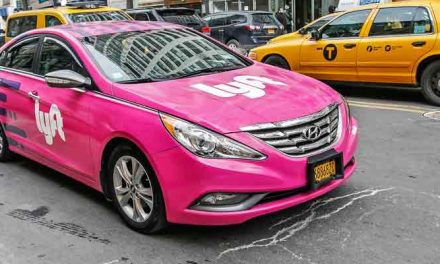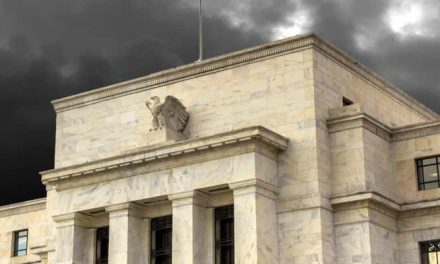Lyft is about to complete its initial public offering, or IPO. That means it will offer stock to individual investors.
This is the first chance for individual investors to own shares of this hot ride-sharing company. Up to now, only large private equity and venture capital (VC) funds got the chance to profit from Lyft.
Analysts expect Lyft to be worth more than $20 billion after the IPO. Money raised in the IPO goes to early investors who are selling and to the company for general corporate purposes.
IPOs are exciting. Television cameras will be on the floor of the exchange. Reporters will update viewers every few minutes on how the process is going.
Cheers will erupt when the first trade occurs. But excitement doesn’t mean IPOs are good buys.
It’s important to note who is selling. In this case, the original investors poured billions into Lyft. The IPO lets them cash out.
This a good deal for the VC funds that gave Lyft so much money. For individual investors, it might not be such a good deal.
Should Individual Investors Buy Into Lyft’s IPO?
Lyft loses a lot of money.
The company lost $911 million in 2018. It might not ever make a profit.
So far, investors funded operations, in effect subsidizing the costs of rides. For years, the investors were large funds with a plan.
Obviously, they didn’t subsidize rides because they thought it was a good way to reduce traffic congestion in large cities. They expected to profit from their investment. The IPO lets them do that.
Now, the VC funds are asking individuals to buy out their positions and give cash to Lyft so that the losses can continue.
One day, Lyft might be profitable. History says it’s best to wait until that happens before buying the stock.
Typical IPO Performance Offers a Warning
There have been more than 8,700 IPOs since 1980. This large pool of data allows us to make some general observations about IPOs.
Many of them delivered gains in the long run. But that’s not enough. Most investors want to beat the market.
Studies consistently find IPOs underperform the broad stock market on average. But there are short-term twists and turns on the way.
Many IPOs report a large gain on their first day of trading. Those gains are often an illusion.
Snap Inc. (NYSE: SNAP) provides a great example.
SNAP completed its IPO on March 2, 2017. The stock ended the day up 44%.
That’s a great headline. But most investors who bought that day lost money.
Remember, in an IPO, the original investors are selling shares to the public. They do that through investment bankers.
In the days before the IPO, investment bankers call their biggest customers and ask how many shares they want.
The bankers are trying to sell millions of shares, so they only call their best customers. That includes hedge funds and high-net-worth individuals with tens of millions of dollars in assets.
Most of us won’t get those calls. There simply isn’t enough time for bankers to do the deal a couple hundred shares at a time.
In the case of SNAP, the large investors agreed to buy the IPO at $17. When trading began on the IPO day, these investors already had their shares.
Individual investors lined up trying to get into the deal. Many of the original owners were willing to sell. More experienced fund managers knew they would be able to flip their shares for a quick profit.
At the open, there are thousands of orders from individual investors. It takes hours to sort through all those requests. For SNAP, it took almost two hours to find the price that maximized the number of trades.
The first trade, at $24, cleared at 11:20 a.m. Large funds who got shares at $17 unloaded those shares to the public at a 41.2% profit.
By the end of the first day of trading, SNAP was at $24.48. Individuals who bought at the open gained 2%.
The current price is more than 60% below the prices seen in the days after the IPO.

SNAP is not an anomaly.
On average, IPOs gained almost 18% in the first five days. Over the next three years, they provide an average total return of 22%.
They make money. But, on average, the IPOs underperform the broad stock market by 17.8% over three years.
You might think Lyft’s IPO isn’t average.
Maybe you think: “There will always be a market for ride-sharing.”
Many investors had that same thought about Blue Apron Holdings Inc. (NYSE: APRN), the meal delivery service.
The chart below shows that the stock has been falling since its IPO.

Some IPOs fall and then come back.
Facebook Inc. (Nasdaq: FB) sold off after its IPO and returned to the price seen on the first day of trading about 14 months later. Many successful IPOs follow that pattern and drop before rising
To limit the effect of the drop, investment bankers usually ask companies to commit to a lockup period.
For 90 days, they want all company insiders to lock up their shares. When the lockup ends, insiders often sell and push the price down. In the chart above of APRN, the blue rectangle marks the end of the lockup.
Velocity Tells Us How to Trade Lyft’s IPO
All this data helps us determine a trading strategy for IPOs.
First, avoid the open. Let inexperienced traders pay the inflated opening price. There is almost always a sell-off after that.
You can enter a limit order to buy 10% below the open, for example. Buying below the opening price increases the probability of a winning trade.
Plan to sell five days later. Or consider selling if you have a gain of more than 20% within the first five days of trading.
Use the next three months to study the company’s financial statements.
Remember, there is almost always a second trading opportunity after the lockup ends. By studying the financials, you’ll know if it’s worth buying when that selling pushes prices down.
The most important lesson from IPO history is to ignore the hype. Few IPOs go straight up.
Most offer buying opportunities on the first trading day. But there’s almost never a reason to buy at the open.
Regards,

Michael Carr, CMT, CFTe
Editor, Peak Velocity Trader









